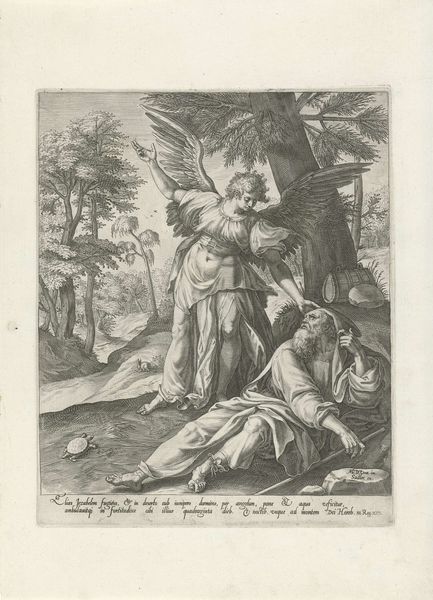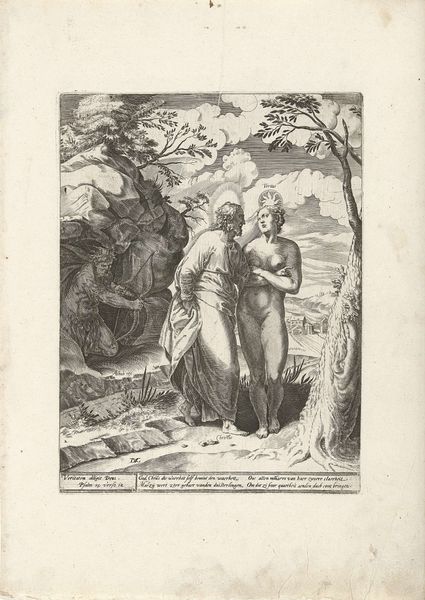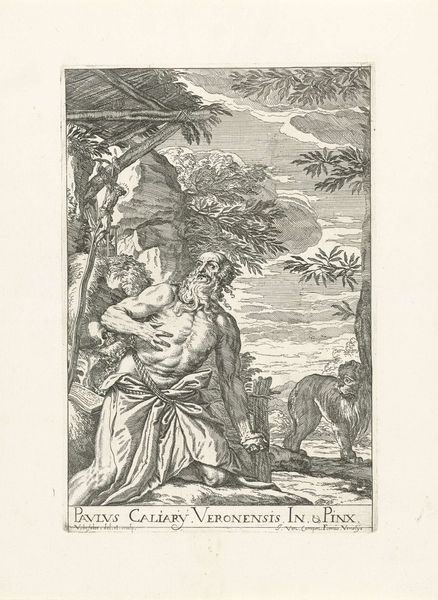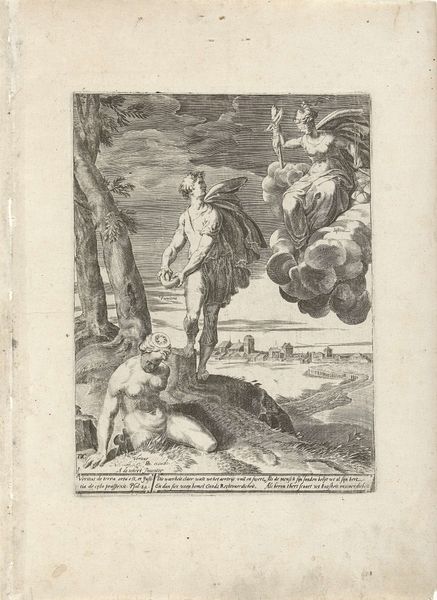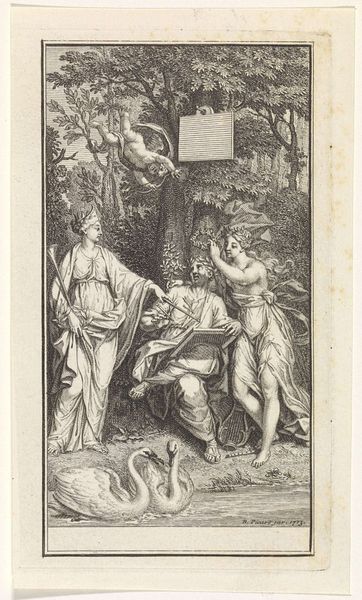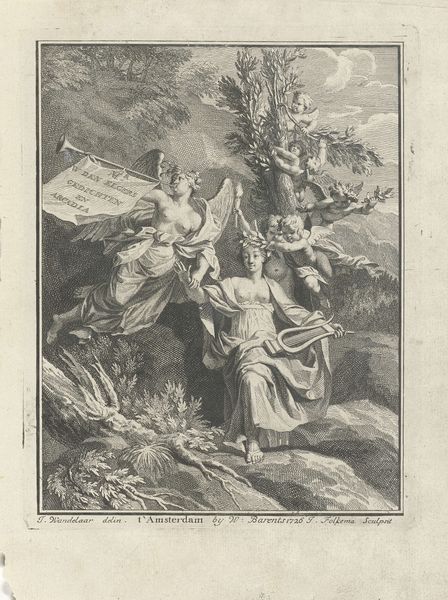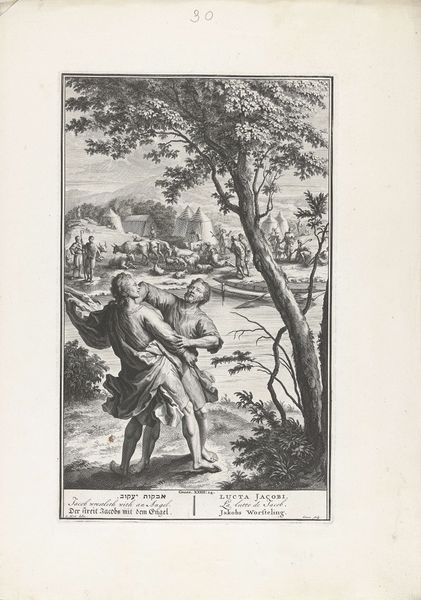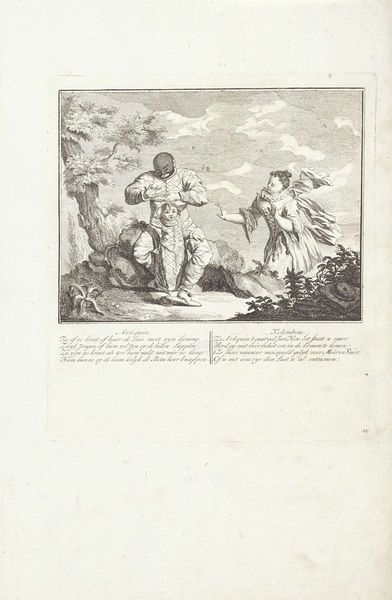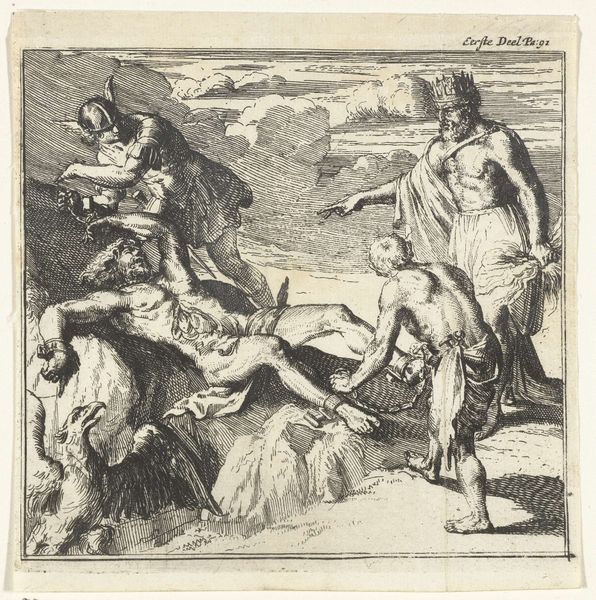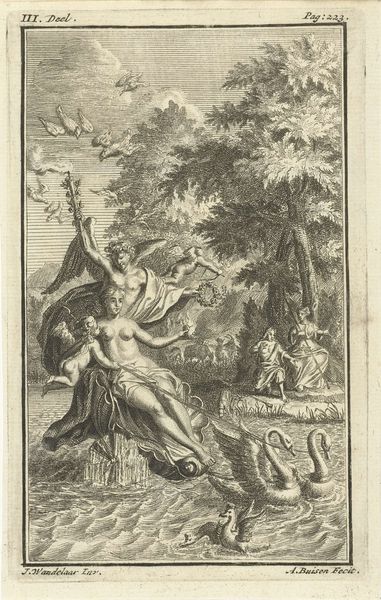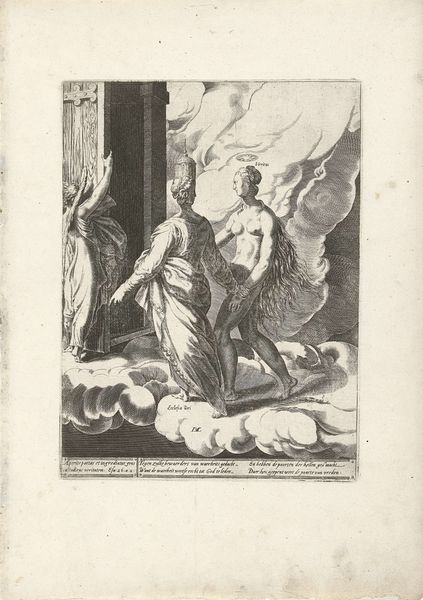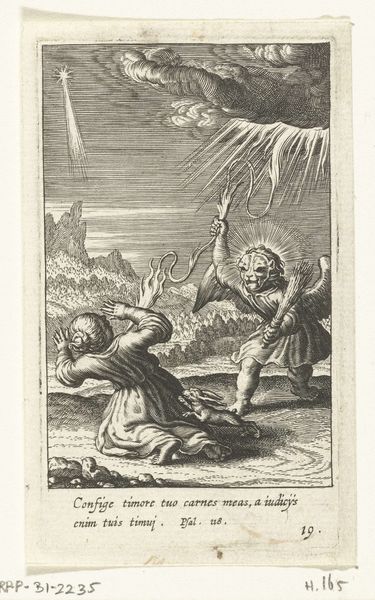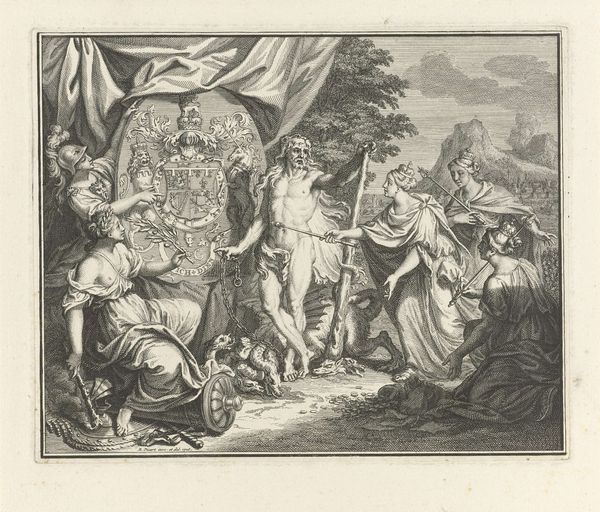
Geloof in de waarheid bevrijdt de mens van haar zonden, de duivel en de dood. 1566 - 1578
0:00
0:00
dirckvolckertszcoornhert
Rijksmuseum
Dimensions: width 192 mm, height 258 mm
Copyright: Rijks Museum: Open Domain
Curator: This engraving, presently housed in the Rijksmuseum, is titled "Geloof in de waarheid bevrijdt de mens van haar zonden, de duivel en de dood," which translates to "Belief in the truth frees people from their sins, the devil and death." Dirck Volckertsz Coornhert created it between 1566 and 1578. Editor: Whoa, that's intense! My first impression? It feels like a battle of light and shadow. Very dramatic, almost operatic, with these figures frozen in some kind of struggle. Is it supposed to be a religious scene? Curator: Indeed. Formally, we observe a distinct dichotomy: a cluster of figures, contorted and seemingly burdened on the left, contrasted with a single, illuminated figure standing upright on the right. This visual separation emphasizes the transformative power of belief. Editor: Right, so we have what looks like sin, death, the devil himself all tangled up under this tree and a figure radiating light, arms raised, like a beacon. Curator: Precisely. Note the stark linearity in Coornhert's style, characteristic of engraving. Each line contributes to the overall allegory, emphasizing form and texture. Also the contrasting diagonals direct our sight and suggest both torment and triumph, guiding the viewer through a symbolic narrative. Editor: It’s strange because on the one hand, it's incredibly detailed; on the other, the light seems to wash over everything, giving the figures this otherworldly, ethereal quality. It makes you think about transcendence and release. You can almost feel the relief. Curator: The technical skill is certainly remarkable. The artist employs shadow and light to underscore the theological weight of the scene. Consider too how that meticulousness—the crisp rendering of musculature, the careful articulation of each facial expression—underscores Coornhert's engagement with theological debate in 16th-century Netherlands. Editor: Absolutely! Even though I'm no expert on art history, this has opened my eyes to not just looking but really seeing, almost feeling the essence. It kind of vibrates with truth. Curator: It’s a dense layering of symbol, but it's meant to reveal how one’s belief affects freedom. Editor: It really makes you pause and ask questions. Art doing its job, I guess.
Comments
No comments
Be the first to comment and join the conversation on the ultimate creative platform.
